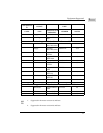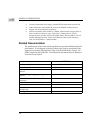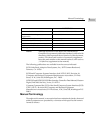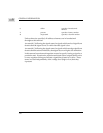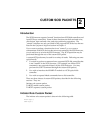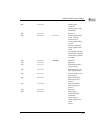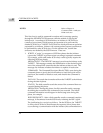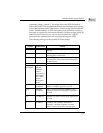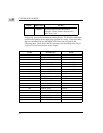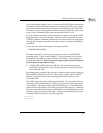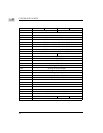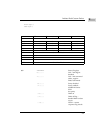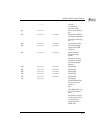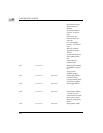
Initiator Role Custom Packet
2-5
2
commonly called a "thread"). The script allows the SCSI firmware to
follow the TARGET bus sequences and also allows the firmware to resume
a disconnected thread once a disconnect/ reselect occurs. Because the SBC
allows "multithreading" of SCSI commands on the SCSI bus, a script is
necessary to resume any disconnected threads. Without a script, the SCSI
firmware would not have any way to check whether the TARGET
performed the command that was requested through the CDB.
The following table gives the possible SCSI bus phases.
PHASE
DIRECTION NOTES
Bus Free No activity on the bus. SEL* and BSY* are not
activated.
Arbitration SCSI devices arbitrate for the use of the bus by
activating BSY* and their ID.
(Re)Selection One SCSI device selects another device by
activating SEL* along with its ID and the ID for
the other device.
Information Transfer Phases: Command
initiator
to TARGET
A command
tells the
TARGET
what is
requested by
the initiator.
The CDB is
passed
during this
phase.
Status TARGET
to initiator
The status of a particular command is passed to
initiator. Examples: good, busy, check.
Data
in
TARGET
to initiator
Data is transferred from the TARGET to the
initiator as a result of a data phase requested in
the CDB.
Data
out
initiator
to TARGET
Data is transferred from the initiator to the
TARGET as a result of a data phase requested in
the CDB.
Message
in
TARGET
to initiator
Messages are sent to the initiator to send bus,
command, and controller information.
Examples: command complete, save data
pointer, restore data pointer, message reject.



